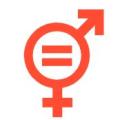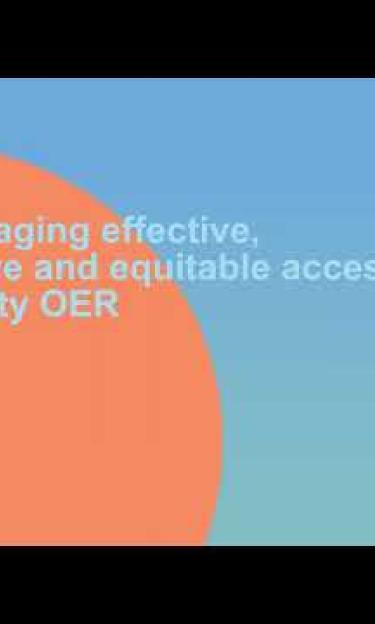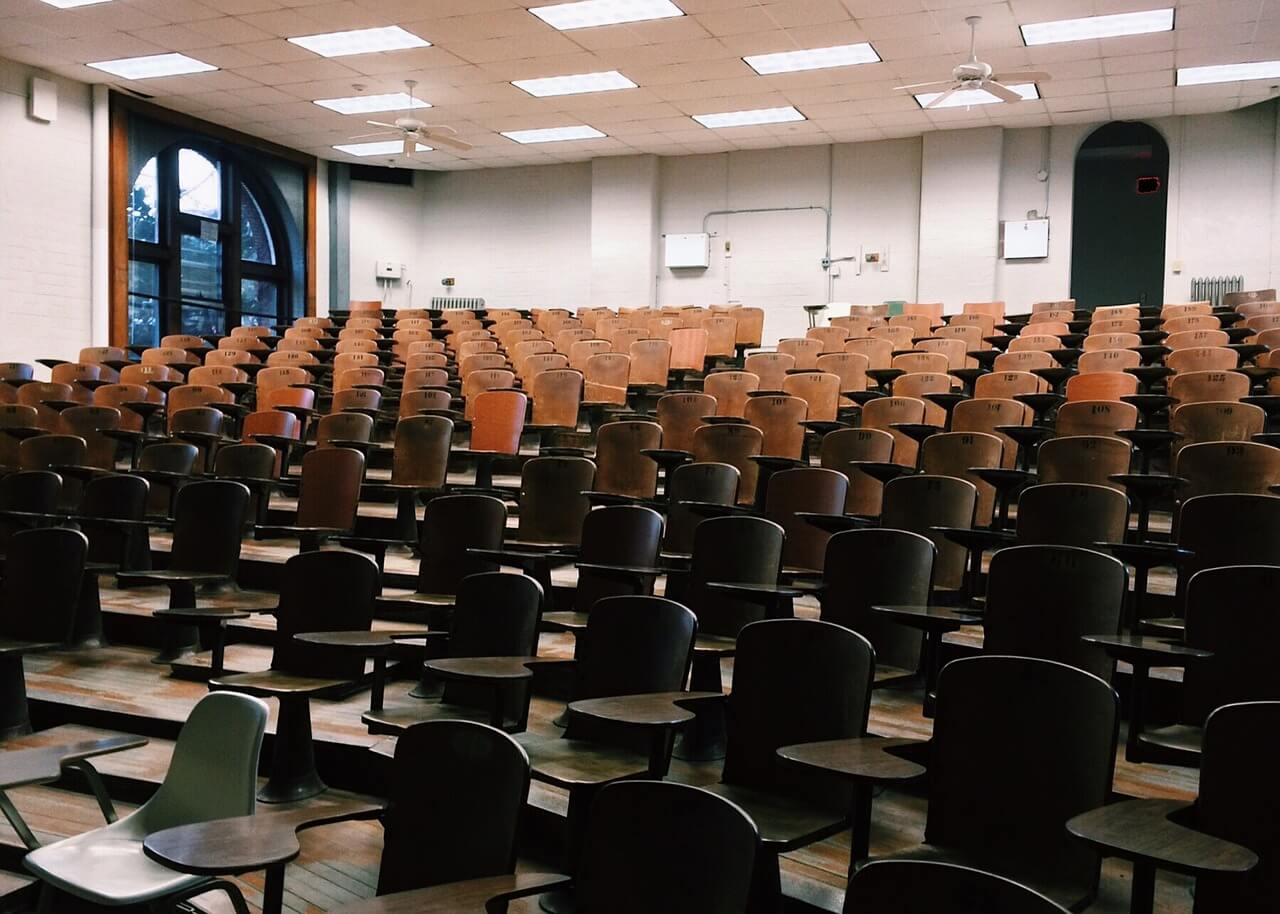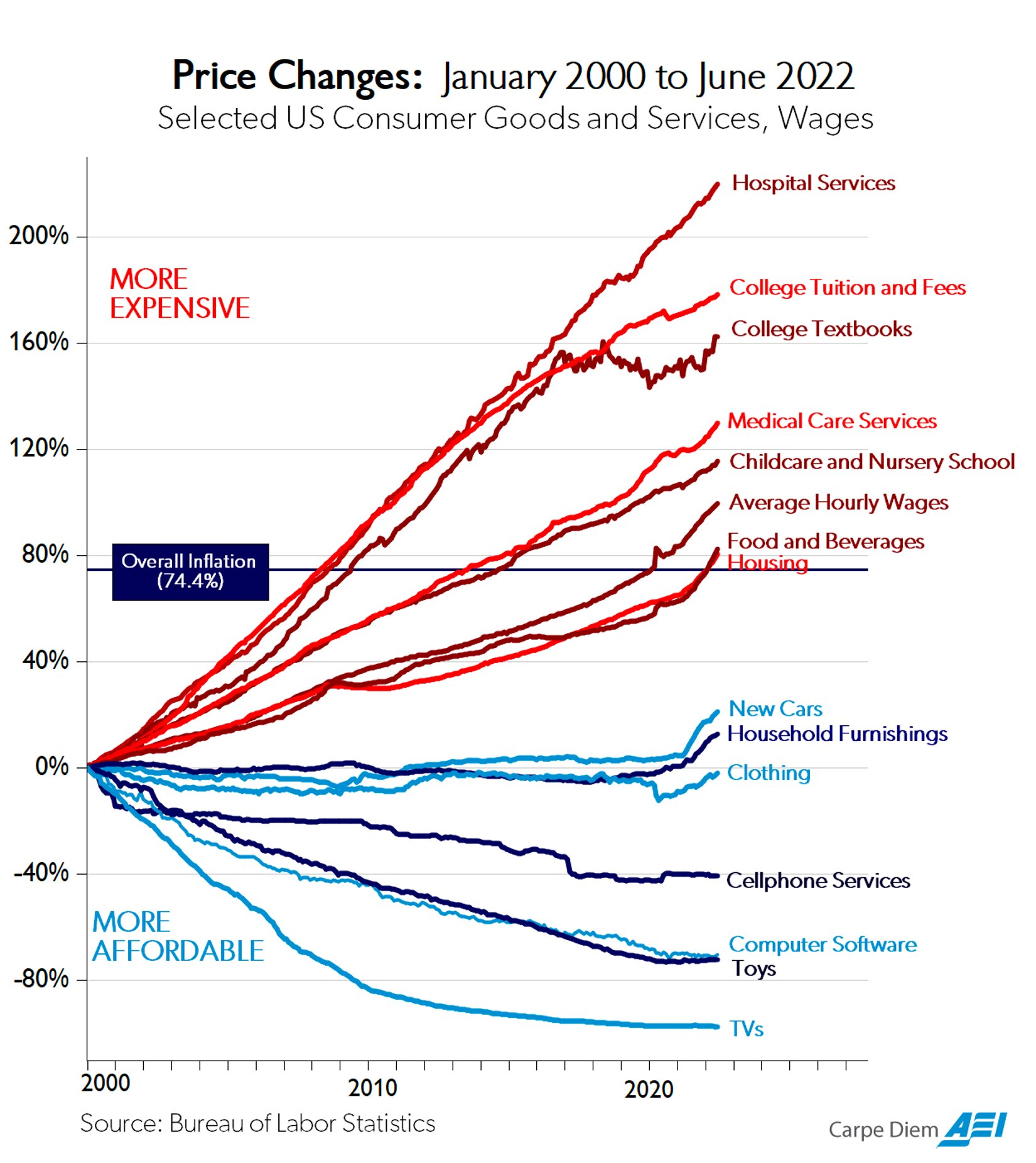

Open Educational Resources
- OER in action
- OER Dynamic Coalition
Open Educational Resources (OER) are learning, teaching and research materials in any format and medium that reside in the public domain or are under copyright that have been released under an open license, that permit no-cost access, re-use, re-purpose, adaptation and redistribution by others.
Open license refers to a license that respects the intellectual property rights of the copyright owner and provides permissions granting the public the rights to access, re-use, re-purpose, adapt and redistribute educational materials.
The Recommendation on OER , adopted by UNESCO’s General Conference at its 40th session on 25 November 2019, is the first international normative instrument to embrace the field of openly licensed educational materials and technologies in education.
To support Member States implementation of the 2019 Recommendation on OER, UNESCO established the OER Dynamic Coalition. The OER Dynamic Coalition aims to support networking and sharing of information to create synergies around the 5 areas of action of the recommendation: (i) building capacity of stakeholders to create, access, re-use, adapt and redistribute OER; (ii) developing supportive policy; (iii) encouraging inclusive and equitable quality OER; (iv) nurturing the creation of sustainability models for OER, and (v) facilitating international cooperation.

Save the Date: The 3rd UNESCO World OER Congress, 19 and 20 November 2024, Dubai, United Arab Emirates
The 3rd UNESCO World OER Congress, ‘Digital Public Goods: Open Solutions and AI for Inclusive Access to Knowledge' (19– 20 November 2024, Dubai U.A.E.) will be hosted by the Mohammed Bin Rashid Knowledge Foundation and aims to enhance global cooperation and innovation in Open Educational Resources (OER) in the framework of the 2019 UNESCO Recommendation on OER.
For more information: [email protected]
Supporting universal access to information through quality open learning materials
Digital skills development for teachers
Contribution to the 2030 Agenda

UNESCO contributes to SDG 4 on quality education for all.

Gender equality, enshrined in SDG 5 and a key enabler to achieve all other SDGs.
SDG 9 calls for the enhancement of scientific research and innovation especially in developing countries.

SDG 10 calls for reducing inequalities.
UNESCO contributes to ensure public access to information and protect fundamental freedoms.

SDG 17 calls for partnerships for the Goals.
OER and knowledge and skills acquisition: What is the UNESCO OER Recommendation?
This extract gives an overview of the different policy areas of the OER Recommendation and illustrates the potential of OER in building inclusive societies as well as the main stakeholders.

Facts and Figures

out of which 13 SIDS and 4 Associate Member States participated in OER events in 2022.

to raise awareness and strengthen capacity on the OER Recommendation since its adoption.

36% women involving 25 Member States.

have adopted the OER Recommendation.
Publications


- Harvard Library
- Research Guides
- Harvard Graduate School of Education - Gutman Library
Open Educational Resources (OER)
- What are Open Education Resources?
About this Guide
What are open education resources (oer), why it's important to use oer.
- OER and Accessibility
- Finding OER
- Creating OER
- Evaluating OER
- How to incorporate OER's in the classroom
- Creative Commons
Open Education Research Librarian

Open Education Network (OEN) Badge

Open Education Network (OEN) Website
This Open Education Resources (OER) guide gives an overview to the Open Education movement, resources, and how educators can use OER's effectively. "For too long, our educational systems have operated with a fundamental disconnect between practices left over from the analog world, and the vast potential of technology and the Internet to support more affordable, effective teaching and learning. The movement for Open Education seeks to close this gap."
This guide is meant for educators and students from the Harvard Graduate School of Education. While it is meant to be introductory, it is not a complete overview of OER. For any questions, please contact Quetzalli Barrientos (OER Librarian).
Open Educational Resources (OER) are teaching, learning, and research materials--digital or print that are in the public domain or have been released under an open license that allows no-cost access, use adaptation, redistribution by others with limited or no restrictions.
"Open" permissions are defined as the "5Rs":
- Retain
- Redistribute
OER examples include: Syllabi, worksheets, open textbooks, lesson plans, etc.
Are OER and OA (Open Access) the same thing? OA means that it is freely available, published digitally online, and has few restrictions on its use or reproduction (definition provided by the Open Access Publishing research guide at Harvard Countway Library)
OER is important to use because:
- Textbooks costs should not be a barrier for education
- Students who use OER are most likely to do better in school
- Technology holds the potential to improve learning and teaching
- Better education=Better future
The above is taken from SPARC: Open Education .
- Next: OER and Accessibility >>
- Last Updated: Aug 22, 2024 3:37 PM
- URL: https://guides.library.harvard.edu/OER
Harvard University Digital Accessibility Policy
Open Educational Resources
The Future of Education, Co-Created With You
Open Educational Resources (OER) Engage and Energize Students
Open Educational Resources (OER) are guided by the idea that high-quality educational materials should be available to everyone.
OER are educational materials—everything from a single lesson plan to an entire textbook—that save students and teachers money because they are free to use, customize, and share.
OER are openly licensed, which makes it easy to personalize materials and infuse them with fresh, relevant content.
– Chad Flinn
Electrical and Entrepreneurship Instructor, British Columbia Institute of Technology, BC
OERCommons Features
Through OER Commons, you can search, browse, and evaluate resources in OER Commons' growing collection of over 50,000 high-quality OER. All of these resources are:
OERCommons Resources
Across K-12 and higher education, educators are working to adjust to the new reality of remote learning. Our librarians have been working diligently to pull together resources to meet the needs of the moment.

Curated collections of kindergarten through high school resources and full courses to help leverage OER for your students. Whether you are looking for resources your students can complete at home, or dynamic content to inspire your own teaching and learning practice, this hub, organized by grade level, subject, and provider will help you discover the resources you need at your fingertips.

Collections of Open Textbooks and full courses to help leverage OER in your classroom. Whether you are looking for more affordable options for your students, or dynamic content to inspire your own teaching and learning practice, this hub, organized by discipline and provider will help you discover the resources you need at your fingertips.

Want to create or adapt books like this? Learn more about how Pressbooks supports open publishing practices.
Introduction to Open Educational Resources
Learning objectives.
By the end of this chapter, you will be able to:
- Provide a definition of open educational resources.
- Explain the difference between OER and other free educational materials.
- Describe the challenges and benefits of using OER in a class.
The purpose of this text is to get you involved in the adoption, creation, and use of open educational resources (OER). In this chapter, we will introduce you to the concept of OER and the benefits and challenges of using them.
Optional Watch: Meet Robin DeRosa, one of the leaders in the Open movement as she shares a bit about the benefits of OER. (run time: 7:22) Note: The video sound is a bit uneven due to how it was filmed.
Attribution: “ Intro to Open Education” by Robin DeRosa is licensed under a CC BY license.
The open education movement was originally inspired by the open source community, with a focus on broadening access to information through the use of free, open content. As Bliss and Smith explain in their breakdown of the history of open education:
“much of our attention focused on OER’s usefulness at providing knowledge in its original form to those who otherwise might not have access. The implicit goal was to equalize access to disadvantaged and advantaged peoples of the world – in MIT’s language, to create ‘a shared intellectual Common.’” [1]
Following the rise of open education in the early 2000s, growing interest in MOOCs, open courseware, and particularly open textbooks catapulted the movement to new heights; however, there are still many instructors who have never heard of open educational resources (OER) today. [2]
What is an OER?
Open educational resources (OER) are openly-licensed, freely available educational materials that can be modified and redistributed by users. They can include any type of educational resource, from syllabi, lessons, modules, videos, software, textbooks, and full courses.
- Openly-licensed: You can read about this more in the Copyright & Licensing chapter.
- Freely Available: The resources must be freely available online with no fee to access. Physical OER may be sold at a low cost to facilitate printing.
- Modifiable: The resource must be made available under an open license that allows for editing. Ideally, it should also be available in an editable format. [3]
The most comprehensive definition of OER available today is provided by the Hewlett Foundation:
“Open Educational Resources are teaching, learning and research materials in any medium – digital or otherwise – that reside in the public domain or have been released under an open license that permits no-cost access, use, adaptation and redistribution by others with no or limited restrictions.” [4]
With a definition so broad that it includes any educational material so long as it is free to access and open, it might be easier to ask, “What isn’t an OER?”
The 5 Rs of Using OER
The terms “open content” and “open educational resources” describe any copyrightable work (traditionally excluding software, which is described by other terms like “open source”) that is either (1) in the public domain or (2) licensed in a manner that provides everyone with free and perpetual permission to engage in the 5R activities :
- RETAIN – make, own, and control a copy of the resource (e.g., download and keep your own copy)
- REVISE – edit, adapt, and modify your copy of the resource (e.g., translate into another language)
- REMIX – combine your original or revised copy of the resource with other existing material to create something new (e.g., make a mashup)
- REUSE – use your original, revised, or remixed copy of the resource publicly (e.g., on a website, in a presentation, in a class)
- REDISTRIBUTE – share copies of your original, revised, or remixed copy of the resource with others (e.g., post a copy online or give one to a friend)

What is Not an OER?
If a resource is not free or openly licensed, it cannot be described as an OER. For example, most materials accessed through your library’s subscriptions cannot be altered, remixed, or redistributed. These materials require special permission to use and therefore cannot be considered “open.” Table 1 below explains the difference between OER and other resources often misattributed as OER.
Note : Although some materials are free to access for a library’s users, that does not mean that they are free to access for everyone (including the library). Similarly, while some open access resources are made available under a copyright license that enables modification, this is not always the case.
* A note about inclusive access : While we will not dive into a deep discussion of inclusive access, we encourage you to learn the facts by visiting InclusiveAccess.org . It is important to note that inclusive access is NOT OER.
Benefits of Using OER
Benefits for students.
One of the first aspects of OER to be praised by the general public was the cost savings that they could bring to students. As Figure 1 shows, the price of college textbooks has risen greatly over the past 35 years, outpacing all other consumer goods in the Consumer Price Index by a great margin.

The cost of textbooks has a profound impact on college students, many of whom must wait to purchase their course materials until well into the semester or choose not to purchase them at all. [5]
The cost of textbooks might not be a major issue on its own, but it can be an insurmountable hurdle for students already struggling to get by. The problem of food and housing insecurity among college students cannot be fixed by adjusting the price of textbooks alone. There are a wide variety of reasons why these problems are in place. [6] However, the unexpected additional cost of textbooks can make the difference between a student persisting in college or dropping out.
In 2021, the Virginia Academic Library Consortium (VIVA) “conducted a Course Materials Survey for Virginia students in higher education. The survey, approved by the George Mason University IRB as 1735732, built on the work of previous states and regions and included a special emphasis on educational equity. More than 5,600 valid student responses from 41 institutions were received, reflecting an overall response rate of 10%.” [7]
The overarching research questions were
- What is the impact of course material costs on educational equity among Virginia students?
- What course content materials do students find to be most beneficial to their learning?
We’ll discuss some of the findings in our Learning Community; however, consider the following statements from UVA students in response to an open question about their perception of their textbook costs.
“I have often had to purchase a book to share with other students in my class, which was inconvenient at times and required extra planning, but [it] was the only financially viable option.” “If there are courses where I know the professor will require us to purchase a lot of books, I avoid taking those courses.” “…too poor to afford them.” “It has stressed me to the point where I have to choose between groceries and buying the book that month.” “It’s another limiting factor for those from disadvantaged backgrounds.”
If you’re interested in learning more, you can read the Executive Summary of the study.
Troubling, the cost of higher education funding continues to shift from the state to the student as visualized in the following charts reflecting data from the State Higher Education Executive Officers Association (SHEEO) .

Access to a Quality Education
When you choose to share course materials openly, you are providing students with the opportunity to engage with your content before, during, and after your course. Because OER are always free to access online, students who are interested in taking a course you teach can read up on the course ahead of time and ensure that they are ready and interested in the material. Moreover, students who have already taken your course can be safe in the knowledge that their course materials will not evaporate at the end of the semester and that they can continue to review the materials you provided to them for years to come.
The students who benefit from access to OER are not just the ones in your classroom. Unlike affordability initiatives like course reserves, OER are free for anyone in the world to access, whether they have a college affiliation or not. [8] This encourages aging learners and students in the Global South to explore educational content without having to commit the time and money they might not have to attend college. [9]
Impact on Academic Success
When students have access to course materials from the first day of the semester, the potential for academic success increases. A large-scale study looking at the impact of OER in higher education found that courses with OER adoption had higher final grades and lower rates of DFW (D, F, and Withdrawal grades) for all students. The increase in final grades and lower rates of DFW were even more significant for Pell recipient students, part-time students, and populations historically underserved by higher education. [10]

Benefits for Instructors
Although cost savings are a major talking point in favor of adopting open educational resources, instructors can utilize OER effectively without replacing paid resources at all. [11] In fact, the freedom to adapt OER to instructional needs is often the most attractive aspect of OER. Since OER are openly licensed, educators are free to edit, reorder, and remix OER materials in many ways.
Use, Improve, and Share
- Adapt and revise resources that have already been created to fit your course syllabus.
- Create an updated second edition of an existing OER.
- Tailor resources to fit your specific course context (e.g., translation, local examples).
Network and Collaborate with Peers
- Access educational resources that have been peer-reviewed by experts in your field.
- Create a new open educational resource with a team of your peers.
- Explore user reviews for a more in-depth understanding of the resources available.
Lower Costs to Improve Access to Information
- Enable all students to have equal access to your course materials.
- Provide students with the opportunity to explore course content before enrolling.
In the Teaching in Higher Ed podcast below, Dr. John Stewart, Assistant Director for the Office of Digital Learning at the University of Oklahoma, talks about his experience with OER.
Using Open Educational Resources in Your Teaching
Challenges of Using OER
There are many benefits to using OER in the classroom; however, there are also some drawbacks. The biggest challenge that instructors face when adopting OER is best encapsulated by the phrase “availability may vary.”
Subject Availability
Many of the largest OER projects funded over the past fifteen years targeted high cost, high impact courses to save students money. Because of this, most of the OER available today are for general education courses such as Psychology, Biology, and Calculus.
This does not mean that there are no OER available for specialized subject areas or graduate-level courses; however, there are more resources to choose from for instructors who teach Introduction to Psychology than for those who teach Electronic Systems Integration for Agricultural Machinery & Production Systems .
Note: This is beginning to change as more institutions begin publishing OER through regional and institutional grant programs.
Format & Material Type Availability
As with subject availability, the format and types of OER that have been developed over time have largely been targeted at high enrollment courses which could see substantial cost savings for students. There are many open textbooks available today, but fewer options for ancillary materials. You can find lecture slides, notes, and lesson plans online, but ancillary content such as homework software and test banks are harder to find. [12]
Time & Support Availability
Although the other challenges to OER use are inherent to the resources themselves, this final drawback is a concern for you as a user and creator. It takes time and effort to find OER that might work for your course, and if you want to create and publish new resources, that takes exponentially more time. A good starting point is using an existing OER and discovering what you like/dislike.
Time constraints are always going to be an issue for instructors who want to try something new in their course. Luckily, there are resources available to help you locate, adopt, and implement OER. Contact your local OER expert on campus–that would include both Emily and Bethany–or your subject librarian if you need support.
Check Your Knowledge
Resources for Further Learning
- OER Mythbusting
- Introduction to Open
Let’s Reflect
- What, if any, of your current materials might be switched to an OER?
- What aspects of Open resonate most with you and your teaching or learning style?
- Bliss, T.J. and Smith, M. "A Brief History of Open Educational Resources." In Open: The Philosophy and Practices that are Revolutionizing Education and Science, edited by Rajiv Jhangiani and Robert Biswas-Diener, 9-27. London: Ubiquity Press, 2017. DOI: https://doi.org/10.5334/bbc.b. ↵
- Weller, Martin. The Battle for Open: How Openness Won and Why it Doesn't Feel Like Victory . London: Ubiquity Press, 2014. DOI: https://doi.org/10.5334/bam ↵
- Although all OER are openly licensed, many are released in formats that do not easily allow for adaptation. ↵
- William & Flora Hewlett Foundation. "Open Educational Resources." Accessed June 15, 2019. https://hewlett.org/strategy/open-educational-resources/ ↵
- Florida Virtual Campus. 2 018 Student Textbook and Course Materials Survey: Executive Summary , 2018. Accessed June 15, 2019. https://www.flbog.edu/documents_meetings/0290_1174_8926_6.3.2%2003a_FLVC_SurveyEXSUM.pdf ↵
- Goldrick-Rab, Sara and Cady, Clare. Supporting Community College Completion with a Culture of Caring: A Case Study of Amarillo College , 2018. https://hope4college.com/supporting-community-college-completion-with-a-culture-of-caring-a-case-study-of-amarillo-college/ ↵
- https://vivalib.org/va/open/survey ↵
- Although OER are free for anyone to access, this access is still limited by who has access to the Internet. Still, since OER can be freely redistributed, some individuals have printed OER for dissemination in areas that do not have Internet access as well. ↵
- Hodgkinson-Williams, Cheryl and Arinto, Patricia B. Adoption and Impact of OER in the Global South . Cape Town & Ottawa: African Minds, International Development Research Centre & Research on Open Educational Resources, 2017. DOI: 10.5281/zenodo.1005330 ↵
- Colvard, Nicholas B., C. Edward Watson, and Hyojin Park. "The impact of open educational resources on various student success metrics." International Journal of Teaching and Learning in Higher Education 30.2 (2018): 262-276. ↵
- Attribution : The Benefits for Instructors section of this chapter was adapted from the SUNY OER Community Course , licensed CC BY 4.0. ↵
- Open textbooks have not always been the most common content shared or marketed as OER. One of the first OER projects, MIT OpenCourseWare, started offering lecture notes, syllabi, and other instructional content openly in 2001. ↵
Free educational materials that are openly licensed to enable reuse and redistribution by users.
A textbook sales model that adds the cost of digital course content into students’ tuition and fees.
University of Virginia OER Learning Community Guide Copyright © 2023 by Bethany Mickel and Emily Scida is licensed under a Creative Commons Attribution 4.0 International License , except where otherwise noted.

2 Defining Open Educational Resources (OER)
What are open educational resources.
Open Educational Resources (OER) are learning, teaching and research materials in any format and medium that reside in the public domain or are under copyright that have been released under an open license, that permit no-cost access, re-use, re-purpose, adaptation and redistribution by others. ( UNESCO Recommendation on OER, 2019 )
In some cases, that means you can download a resource and share it with colleagues and students. In other cases, you may be able to download a resource, edit it in some way, and then re-post it as a remixed work. How do you know your options? OER often has a Creative Commons license that tells you how the material may be used, reused, adapted, and shared, and we’ll explore these licenses in detail in a future chapter called What are Create Commons Licenses? In addition, the Creative Commons Wiki offers more definitions of OER .
An Introduction to Open Educational Resources
The video below provides a brief overview of how the use of OER can benefit our students and courses, how we define OER and open licenses, what types of materials you might use, how to incorporate an OER into your course, where to find OER, and where to get support. Each of these points will be explored more deeply in further chapters of this guidebook.
Elder, A. (n.d.). An introduction to open educational resources . Creative Commons Attribution 4.0 License. https://www.youtube.com/watch?v=NtJmakm1-zc
Paradiso, J. R., & Luken, D. (n.d.). Introduction to open education (Adapted from Parsons, J., OER specialist training manual ). Licensed under CC BY SA 4.0.
West Library, Texas Wesleyan University. (n.d.). Open educational resources (OER) . Creative Commons Attribution 4.0 License. https://txwes.libguides.com/oer
UCF Open Educational Resources OER Starter Guide Copyright © by Emily Franklin; Charlotte Jones-Roberts; Dr. Denise Lowe; and Susan Spraker is licensed under a Creative Commons Attribution-ShareAlike 4.0 International License , except where otherwise noted.
Share This Book
Open Educational Resources (OER): Overview and Definition

- Share article
As long as there have been teachers, there has been sharing: binders of lesson plans, boxes of laminated hand-drawn math games, even recycled scraps of art projects. But with the advance of the internet and particularly online social platforms like YouTube and Pinterest, the ability to develop, share, and adapt even complex curricular materials has exploded.
From Coursera’s free college classes to EngageNY’s common-core curriculum materials to physicist Henry Reich’s Minute Physics cartoons, educational materials are available at every scale online. But what makes a particular set of materials “open,” and how can schools best use these materials?
What are open educational resources?
Open educational resources are materials for teaching or learning that are either in the public domain or have been released under a license that allows them to be freely used, changed, or shared with others.
OER may include everything from a single video or lesson plan to a complete online course or curriculum and also include the software platforms needed to create, change, and share the materials.
How is OER different from other online materials?
Many materials billed as OER do not technically fall into that category. For example, a video that has a creative commons license might not necessarily be open; the agreement may instead allow it to be freely used but not altered or repurposed, according to the Organization for Economic Cooperation and Development’s 2015 study of OER. Other materials allow sharing and modifications but only within a paid subscription service. That would also not be considered OER.
That does not mean OER has to be completely nonprofit. To make ongoing OER projects sustainable, some have allowed companies to offer organized “playlists” or other curated packages of materials for a fee. Other projects, such as the SciShow series on YouTube, allow donations through patronage websites such as Patreon and Subable.
Also, because there are many different types of open licenses, OER users must be careful of the fine print about how the material can be reused, adapted, or distributed.
What does federal education law say about open educational resources?
The Every Student Succeeds Act highlights “openly licensed content” in its definition of digital learning, noting that such resources can strengthen students’ educational experiences.
See Also : Special Report: Navigating New Curriculum Choices In this special report, Education Week focuses on helping educators navigate an increasingly diverse marketplace of new—and often promising—curricular choices.
The law explicitly allows states to use federal block grants provided by Title IV to support local projects aimed at “making instructional content widely available through open educational resources, which may include providing tools and processes to support local educational agencies in making such resources widely available.”
And beginning in fiscal 2018, the U.S. Department of Education will require a majority of its competitive-grant winners to openly license any final products created with the money—such as teacher professional-development units, curricula, or any other copyrightable materials, as well as the supplemental materials needed to use them. The departments of Labor and State and the National Science Foundation have similar requirements for some of their grants.
“However, the open-licensing rule is now delayed , as the Trump administration is rethinking most rules put into place under the Obama administration.
How are open educational resources used?
The vast majority of districts that use open materials include them as formal or ad hoc supplements to an existing curriculum or program. For example, teachers may use an open lesson plan online to add an enrichment activity for students or to provide additional practice for students struggling with a concept. A teacher with a limited science lab might use open online videos to craft demonstrations of classic experiments. Users have downloaded some or all of EngageNY, the Empire State’s open library of materials aligned with the Common Core State Standards, more than 45 million times.
Some schools and districts, such as the Houston public schools, have curated collections of open materials into a single digital library to make it easier for teachers to find specific lesson plans or materials for their grade level and subject.
And a handful of districts, including one in Grandview, Wash., are moving away from traditional textbooks entirely in some subjects and instead creating digital curricula made up only of open resources. These can be updated as new materials come in, but they require significant commitment to review and catalog materials for teachers.
What are the potential downsides of using open educational resources?
Because anyone can create and distribute an open resource, individual states, districts, and even teachers generally decide whether any given OER is high quality and appropriate to a particular grade, subject, or group of students. The National Council of Teachers of Mathematics warned that OER can create equity problems if different schools within the same district use materials of different levels of quality.
Related Reading
- How Are Teachers Using EngageNY’s Reading and Math Materials? March 27, 2017.
- Leaders To Learn From: Smart Ed-Tech Strategy That Comes From the Classroom December 7, 2016.
- Leaders To Learn From: Superintendent Fosters Love of Reading December 7, 2016.
- NCTM Urges Caution in Using Open Resources, November 16, 2016.
- Free Teaching Website Expands on EngageNY’s Mission, June 1, 2016.
- Creators of EngageNY Start New Archive of Free Common-Core Materials, May 18, 2016.
- Open Education Resources Get Major Boost From ESSA, January 20, 2016.
- Flood of Open Education Resources Challenges Educators, January 13, 2016.
- N.Y. ‘Open’ Education Effort Draws Users Nationwide, June 10, 2015.
How to Cite This Article Sparks, S. (2017, April 12). Open Educational Resources (OER): Overview and Definition. Education Week . Retrieved Month Day, Year from https://www.edweek.org/teaching-learning/open-educational-resources-oer-overview-and-definition/2017/04
Sign Up for EdWeek Update
Edweek top school jobs.

Sign Up & Sign In

